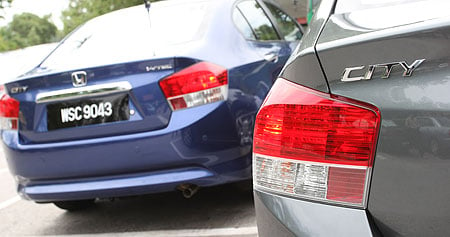
The Japanese B-segment market is indeed a hot one and is dominated by the H and T badges, despite honest efforts by other manufacturers such as Suzuki to make an impact with cars such as the SX4 sedan. The City and the Vios remain the champions of the under RM80k non-national sedan market and are the target of many people who long to break out of what they feel is the curse of Proton ownership, so naturally the launch of the new Honda City this year was very eagerly awaited. The new City is blessed with good looks and now that the launch and fanfare are over, it’s time to take a good look at the car and see if it is indeed as good as it looks.
Read my full driving impressions after the jump.
Design
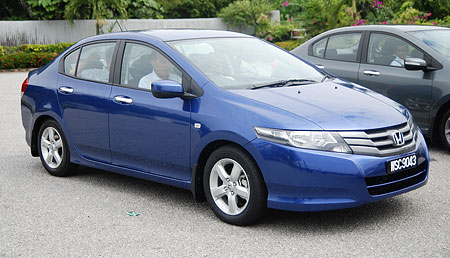
While the design of the City is not perfect, it’s way better looking than the odd hatchback with a boot slapped previous generation City. It’s also got a more classic sedan look to it with none of that A-pillar triangular window stuff. A sports sedan to be exact. I still like the shape as much as I did when I first saw it on the spyshots on the internet, especially the white one transported in China. It’s just too bad Honda isn’t offering the car in white here, in fact there are no white Hondas on sale except for the Type R, but I was told white is being added to the CKD paint process soon.
The top of the line model gets foglamps but I kind of prefer the bumper without the foglamps as somehow it helps make the car look wider and shorter. Chrome for the door handles are a nice touch, while the fuel lid opens up with just a touch much like more pricey European cars.
Interior
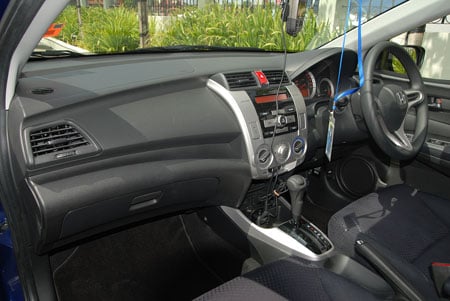
With the new City, you no longer get that airy feeling that was present in the old City. This is the result of the seating position being much more car-like rather than mini-MPV-like, thanks to Honda distancing the City from its boot-less Jazz sibling. While the Ultra Seats are gone, things like using the bottom of the rear seats to store an umbrella is a great idea. Never again do you have to place it in some random area on the floor of your car and get your whole carpet/mats soaked more than necessary.

Being someone about 181cm tall, I was quite happy in the driver’s seat of the City. Everything was quite ergonomic, from steering position to seat height and position. The storage compartments are also easy to use and the little storage area under the driver side air cond vent is quite usable for your Touch N Go card as its slant prevents the card from sliding out of the compartment. The fuel tank is located under the front seats so there’s not much room for you to install your aftermarket ICE amplifiers there.
The raised floor caused by the fuel tank also juts out a little when you push the front seats nearly all the way back as I needed to do because of my height, so you are quite limited in where you can rest your leg if you want to fold it inwards towards you instead of placing it on the footrest.
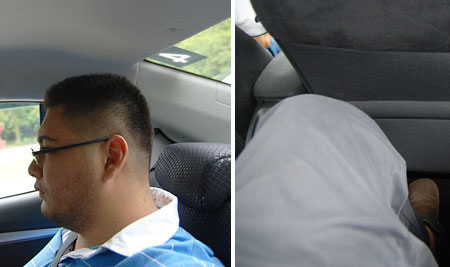
There is enough headroom at the rear and decent leg space. Nothing to complain about there. You could definitely seat 3 adults in the rear bench with reasonable amount of comfort, as it is wide enough. The rear bench is reclinable in the top spec model so that adds a bit more comfort for long journeys as you don’t have to sit too upright.
The instrument panel looks good and is easy to read, and there is a multi-information display that can show you various data such as fuel consumption in real time. Well, not exactly fuel consumption but more of fuel economy as the reading is in km per litre, so the higher the bar goes the more km you are getting from each litre according to your driving style.
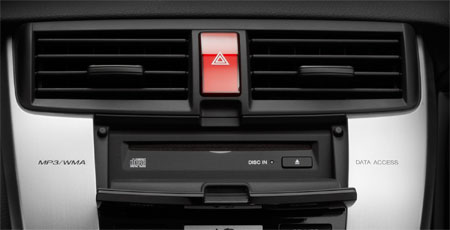
The CD player slot is hidden behind the radio display, which is rather neat and I liked how the paid attention to how the radio display actually flipped down – it doesn’t just snap down like how a cheap metal pencil case made in China would open, if you get what I mean.
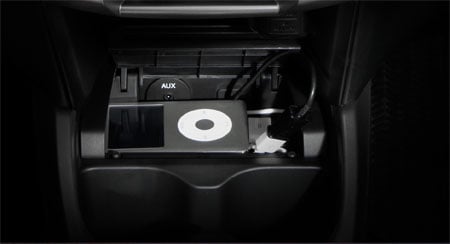
The USB interface is hidden in front of the gear lever in the storage compartment. You can load MP3s and WMAs from a USB device, and because the USB port is powered, if your PDA uses a USB cable for charging you can just plug it into the USB port and juice up. The radio LCD display is a very low resolution one with limited text display capabilities so it doesn’t do much to show your full song title or CD ID3 text completely.
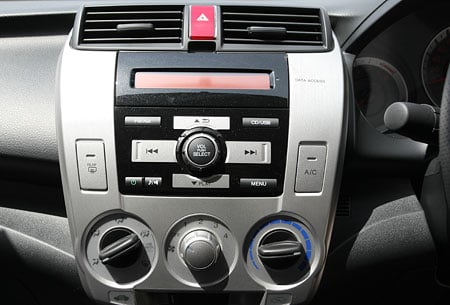
Despite refinement in certain areas, Honda could really have done better with the choice of colour for the whole center dash area. It seems poorly styled compared to the rest of the vehicle. Sure, it’s functional, but choices of material in certain areas especially the center dash makes it look rather toy-like. It’s got nothing to do with the quality of materials as I am sure they could have pulled this off within budget and not look cheap at the same time. A case of good intentions but misguided styling perhaps. While you may be put off by it at the showroom, this is something that you will get used to and forget after a while.
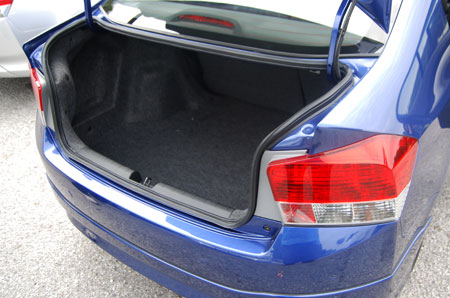
The boot is cavernous at 506 litres, and to achieve this space there is no full-size spare tyre but one of those thinner emergency ones. One nice touch is how Honda has neatly hidden away the wheel jack and other tyre change tools under a plastic part with a wheel jack logo on it.
Driving Experience
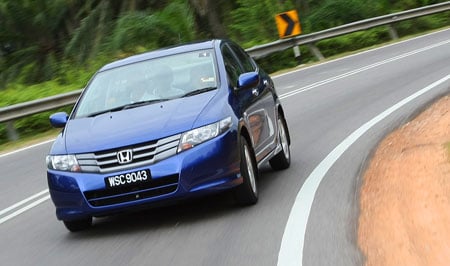
The City handles Malaysian roads quite well, absorbing road irregularities to a level that is expected from a car like this, and striking a good balance between comfort and handling which is what a Honda buyer would expect. The steering and pedals are light and easy to use for a beginner driver. The City can take corners with confidence and even when you start sliding out of control it is very easy to correct. The combination of the electric power steering accuracy, weight and the lack of any excessive bodyroll except in the extremes makes the City a car that’ll keep the driver happy, that is until he is joined by passengers.

Honda’s media drive to Malacca assigned 3 of us to a car and I began to understand why Mainland China consumers get a 1.8 litre motor in the City. The City may feel sluggy at times and it was made worse by the really hot day. While the engine boasts 120 PS of output, this is only achievable way beyond the 6,000rpm rev range so none of it is actually usable when you are in a hurry but exactly in a hurry enough to slam the pedal to the metal and let the car rev to the redline in all gears. It’s enough power to get going but not enough for the whole gutsy feeling that Honda likes associating the car with. So yes, it’s best to drive gently and smoothly whenever there are maybe 2 or more passengers in the car to keep both yourself and the engine happy, otherwise you’ll be looking for air filter, exhaust and all sorts of mods to extract more power from the car.
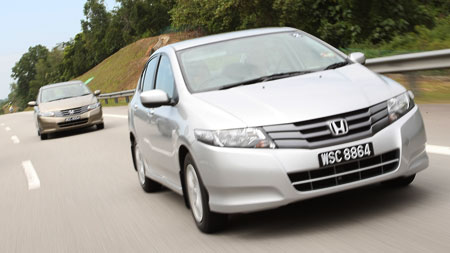
You also don’t get to keep the revs up as often as you’d want because despite having 5 gear ratios, the last 2 are overdrive gears with one extra tall gear for more silent and economical highway cruising (for this purpose it works rather well), so during City driving and acceleration it performs identically to a 4-speed auto. While this works well for a car like the Civic 2.0 where the engine is meaty enough, perhaps Honda could also have taken the opportunity to provide more closely-spaced ratios instead to improve acceleration, and have just one extra tall overdrive gear (instead of one very tall one and one not as much) for high speed cruising?
The feeling of a stepped gearbox is nice, and contributes to giving the City a more sporty feel, rather than the rubberband-ish feeling of a CVT, no matter how much more efficient a CVT actually is. The engine doesn’t seem as smooth as a Honda should be, getting a little loud and rough (and slightly Campro-ish metallic raspy reverb) from the high-mid revs onwards. But under normal and relaxed driving conditions, none of these characteristics are noticeable.
I eagerly wait for the day Honda decides to phase out this stuff and replace it with a 1.4 litre i-DSI Turbo or something. 120 PS and 180Nm of torque from at low as 1,400rpm sounds nice. They already have an i-DSI turbo for the Honda ZEST.
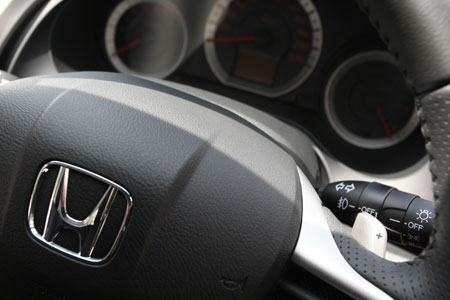
The high spec car’s paddle shifts are easy to work and just plain works, but this isn’t a quick shifting DSG box so there is a noticeable lag between you pressing the paddle shift and the gearbox actually doing something. If you engage paddle shift mode in the S mode, you will be in the M mode which means the gearbox will not shift even if you go past the redline, after of which the revcut will kick in and prevent you from over-revving the engine. The gearbox will also never downshift on command if it detects that the engine will be over-reved on a downshift.
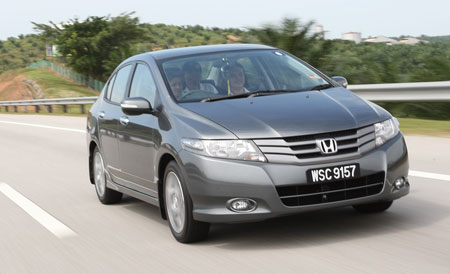
The car was quite stable and planted (some would say it feels “solid”) at most speeds until you reach about 160km/h where in a straight line you could feel a little nervousness in the car, like your tyre contact patch to the ground wasn’t very large. It was only present in the lower spec car, which at first we attributed to the smaller wheels but once we gave this feedback to the Honda engineers he said the difference should not have been that big. This could have been an alignment issue with the test cars which we were told were prototype cars, so I hope to have this tested again in another drive.
If you keep to the brand values that the average Joe on the street associate Honda with, this new City seems much more like a “Honda” than the previous City ever was but at the same time loses what made the previous City unique. The previous City was something more like a Citroen or any random wacky European manufacturer in its concept, it did what it was supposed to do really well and was nice and airy on the inside but its looks suffered because of the good interior dimensions.

This new City on the other hand has a traditional sporty forward-shooting wedge design, and has the driving position to match. I’ve tried my best to give you a detailed report of my day with the car, the rest is up to you to feel the car yourself and do a little more research on (if there are) any potential problems early adopters might be encountering, and how to go around them.
While there are 2 airbags and the standard anti-lock brakes, nowhere in the world is the Honda City available with any form of stability control, which is a concern at the moment if Honda wants to bring the car to Europe, unless it is only thinking of the poorer Eastern Europe countries. They are working on this, so it may be a feature that will debut with the facelift model.
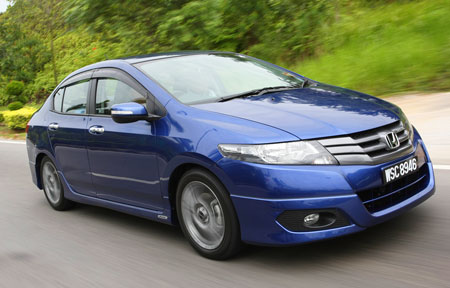
Next up I will try to get the City again for a fuel consumption test as well as another high-speed stability test. To learn more about the new City, read the two stories below. There’s alot more to read and know other than the driving impressions in this report.
Related Posts:
2009 Honda City 1.5E and 1.5S launched in Malaysia
2009 Honda City in-depth details and specifications
Looking to sell your car? Sell it with Carro.




















AI-generated Summary ✨
Comments indicate that the Honda City is praised for its attractive design, spacious interior, and good fuel economy, making it a suitable urban family car. Many owners express satisfaction with the car’s handling and performance in city driving, though some find the engine slightly sluggish or noisy at high speeds. Concerns about interior quality and the lack of auto lock are common but considered minor issues. Several reviewers highlight the car’s stylish look and value for money, with some comparing it favorably against competitors like Vios and Kia Forte. Others criticize the high price in Malaysia due to import costs and discounts, lamenting the lack of white color options and the high cost of spare parts. Overall, sentiments are generally positive, emphasizing the City’s looks and practicality despite some minor shortcomings.